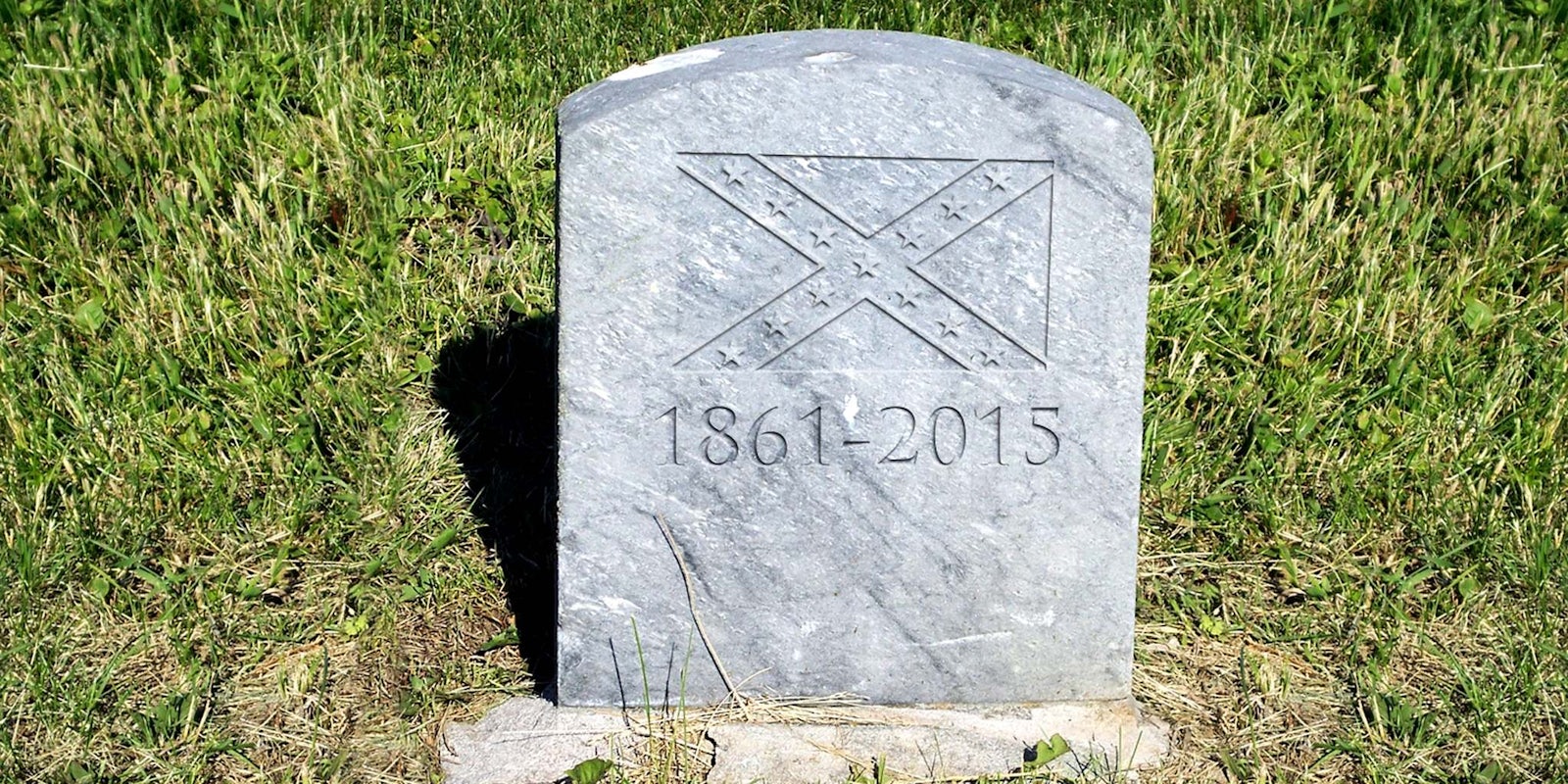On Monday, June 22, 2015, South Carolina Gov. Nikki Haley called for the the Confederate flag—reviled as a symbol of racial hate and celebrated as an heirloom of pride over a failed, pro-slavery rebellion—to be removed from the grounds of the state capitol in the city of Columbia. More surprisingly, Walmart said it would stop selling merchandise that featured the design.
The flag was 154 years old at the time of its sudden death.
https://twitter.com/ChuckRingwalt/status/613076986307719168
Scoop: Walmart will remove all Confederate flag merchandise from its stores http://t.co/k7i2sFGA0O @CNNPolitics
— MJ Lee (@mj_lee) June 22, 2015
Born in 1861, the “Stars and Bars”—as it was known to people who prominently displayed it in bumper sticker form and didn’t realize that this phrase refers to an entirely different flag—had a difficult early life. Initially rejected as the national flag of the Confederate States of America, it served out the Civil War as the battle flag of the Army of Northern Virginia under the famed General Robert E. Lee, eventually fading into obscurity.
Indeed, were it not for a significant spike in the Ku Klux Klan’s activities and xenophobia in the 1920s, the so-called Confederate flag may well have been relegated to antifederalist footnote status—though it remained just one of the KKK’s many favorite cult insignias. It later went on to be proudly displayed by World War II soldiers seemingly confused about which country or ideals they were supposed to be fighting for.
The flag’s star-making turn came with the run of popular TV series The Dukes of Hazzard (1979–1985), in which it starred as the roof of a 1969 Dodge Charger. Though the casting went strongly against type, critics praised the flag’s consistency and versatility as a reminder of the American South’s unwillingness to admit they totally lost the Civil War and will never, ever rise again. For any reason.
In later years, the Confederate flag continued to make appearances in select fraternity houses and ill-conceived fringe political rallies, often attacked by sensible people for its overt connotations of arcane bigotry. In that sense, it died as it lived: racist as hell. It is survived by the NRA, conservative talk radio, and Skoal-brand dipping tobacco.
Photo via Jo Naylor/Flickr (CC BY SA 2.0) | Remix by Jason Reed


